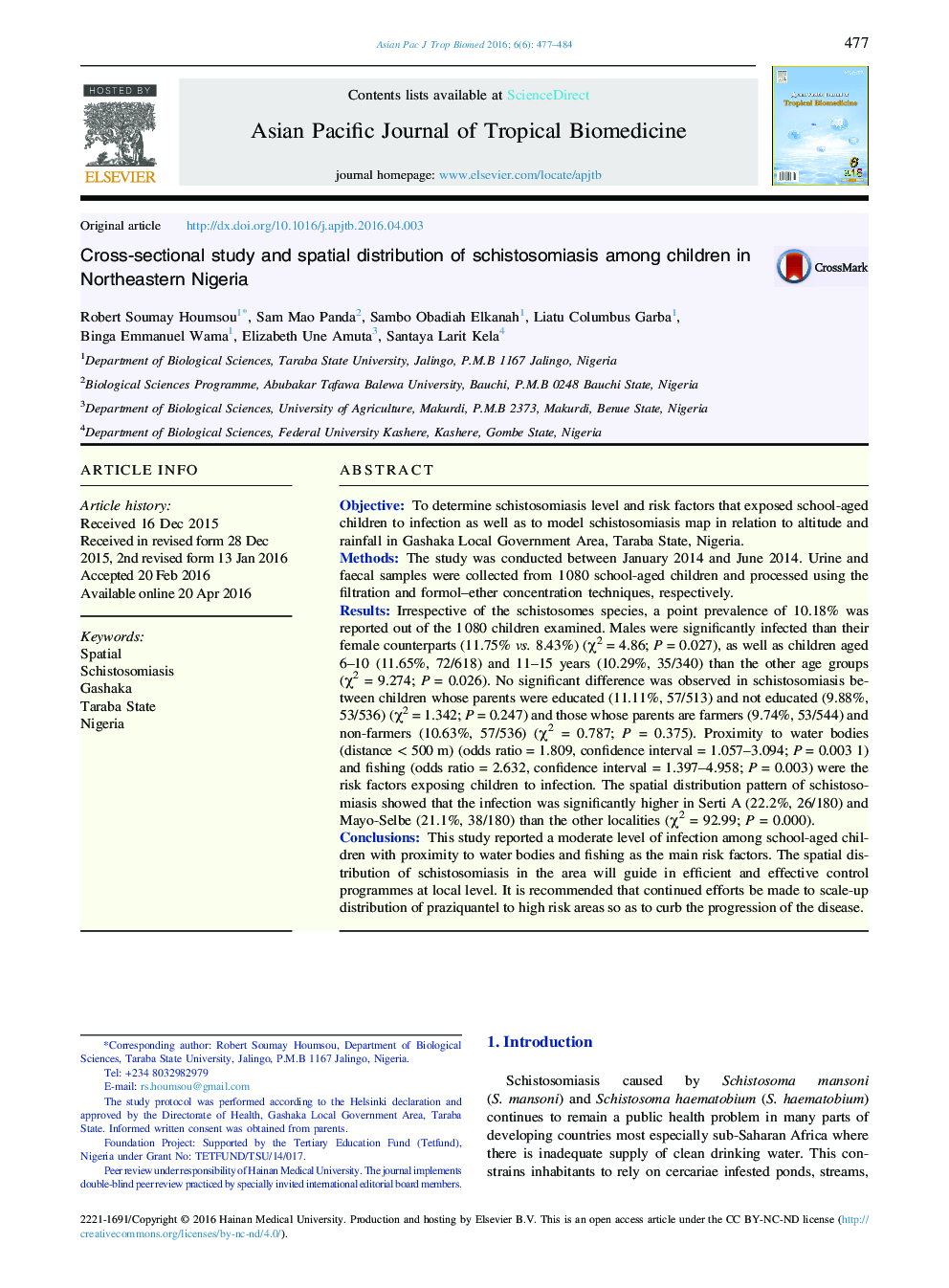| Article ID | Journal | Published Year | Pages | File Type |
|---|---|---|---|---|
| 2032461 | Asian Pacific Journal of Tropical Biomedicine | 2016 | 8 Pages |
ObjectiveTo determine schistosomiasis level and risk factors that exposed school-aged children to infection as well as to model schistosomiasis map in relation to altitude and rainfall in Gashaka Local Government Area, Taraba State, Nigeria.MethodsThe study was conducted between January 2014 and June 2014. Urine and faecal samples were collected from 1 080 school-aged children and processed using the filtration and formol–ether concentration techniques, respectively.ResultsIrrespective of the schistosomes species, a point prevalence of 10.18% was reported out of the 1 080 children examined. Males were significantly infected than their female counterparts (11.75% vs. 8.43%) (χ2 = 4.86; P = 0.027), as well as children aged 6–10 (11.65%, 72/618) and 11–15 years (10.29%, 35/340) than the other age groups (χ2 = 9.274; P = 0.026). No significant difference was observed in schistosomiasis between children whose parents were educated (11.11%, 57/513) and not educated (9.88%, 53/536) (χ2 = 1.342; P = 0.247) and those whose parents are farmers (9.74%, 53/544) and non-farmers (10.63%, 57/536) (χ2 = 0.787; P = 0.375). Proximity to water bodies (distance < 500 m) (odds ratio = 1.809, confidence interval = 1.057–3.094; P = 0.003 1) and fishing (odds ratio = 2.632, confidence interval = 1.397–4.958; P = 0.003) were the risk factors exposing children to infection. The spatial distribution pattern of schistosomiasis showed that the infection was significantly higher in Serti A (22.2%, 26/180) and Mayo-Selbe (21.1%, 38/180) than the other localities (χ2 = 92.99; P = 0.000).ConclusionsThis study reported a moderate level of infection among school-aged children with proximity to water bodies and fishing as the main risk factors. The spatial distribution of schistosomiasis in the area will guide in efficient and effective control programmes at local level. It is recommended that continued efforts be made to scale-up distribution of praziquantel to high risk areas so as to curb the progression of the disease.
